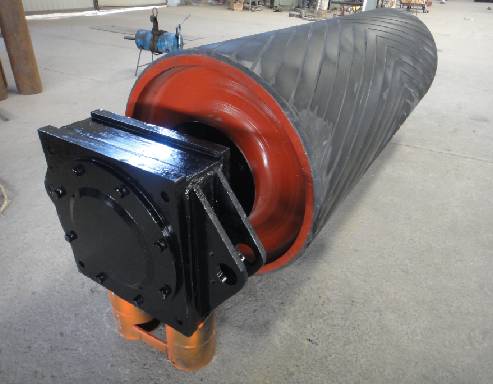 Afrikaans
Afrikaans  Albanian
Albanian  Amharic
Amharic  Arabic
Arabic  Armenian
Armenian  Azerbaijani
Azerbaijani  Basque
Basque  Belarusian
Belarusian  Bengali
Bengali  Bosnian
Bosnian  Bulgarian
Bulgarian  Catalan
Catalan  Cebuano
Cebuano  Corsican
Corsican  Croatian
Croatian  Czech
Czech  Danish
Danish  Dutch
Dutch  English
English  Esperanto
Esperanto  Estonian
Estonian  Finnish
Finnish  French
French  Frisian
Frisian  Galician
Galician  Georgian
Georgian  German
German  Greek
Greek  Gujarati
Gujarati  Haitian Creole
Haitian Creole  hausa
hausa  hawaiian
hawaiian  Hebrew
Hebrew  Hindi
Hindi  Miao
Miao  Hungarian
Hungarian  Icelandic
Icelandic  igbo
igbo  Indonesian
Indonesian  irish
irish  Italian
Italian  Japanese
Japanese  Javanese
Javanese  Kannada
Kannada  kazakh
kazakh  Khmer
Khmer  Rwandese
Rwandese  Korean
Korean  Kurdish
Kurdish  Kyrgyz
Kyrgyz  Lao
Lao  Latin
Latin  Latvian
Latvian  Lithuanian
Lithuanian  Luxembourgish
Luxembourgish  Macedonian
Macedonian  Malgashi
Malgashi  Malay
Malay  Malayalam
Malayalam  Maltese
Maltese  Maori
Maori  Marathi
Marathi  Mongolian
Mongolian  Myanmar
Myanmar  Nepali
Nepali  Norwegian
Norwegian  Norwegian
Norwegian  Occitan
Occitan  Pashto
Pashto  Persian
Persian  Polish
Polish  Portuguese
Portuguese  Punjabi
Punjabi  Romanian
Romanian  Russian
Russian  Samoan
Samoan  Scottish Gaelic
Scottish Gaelic  Serbian
Serbian  Sesotho
Sesotho  Shona
Shona  Sindhi
Sindhi  Sinhala
Sinhala  Slovak
Slovak  Slovenian
Slovenian  Somali
Somali  Spanish
Spanish  Sundanese
Sundanese  Swahili
Swahili  Swedish
Swedish  Tagalog
Tagalog  Tajik
Tajik  Tamil
Tamil  Tatar
Tatar  Telugu
Telugu  Thai
Thai  Turkish
Turkish  Turkmen
Turkmen  Ukrainian
Ukrainian  Urdu
Urdu  Uighur
Uighur  Uzbek
Uzbek  Vietnamese
Vietnamese  Welsh
Welsh  Bantu
Bantu  Yiddish
Yiddish  Yoruba
Yoruba  Zulu
Zulu head pulley tail pulley
Understanding the Mechanics of Head and Tail Pulleys in Conveyor Systems
In the realm of material handling and industrial engineering, conveyor systems play a crucial role in the efficient transportation of goods and materials. Among the essential components of these systems are the head and tail pulleys, which are fundamental to the functioning of a conveyor belt. Understanding the mechanics of head and tail pulleys, along with their applications, is vital for optimizing conveyor performance and ensuring smooth operations.
Head Pulley The Driving Force
The head pulley, also known as the drive pulley, is located at the discharge end of the conveyor. Its primary function is to provide the mechanical power needed to move the conveyor belt and the materials on it. The head pulley is typically connected to a motor via a belt or chain drive system. When the motor spins the head pulley, it creates friction between the pulley surface and the conveyor belt, propelling the belt forward.
The design and configuration of the head pulley can vary based on the application. For instance, head pulleys can be either lagged or bare. Lagged head pulleys feature a rubber coating that enhances grip and traction, essential when transporting heavy loads. In contrast, bare pulleys are smoother and are typically used in applications where the belt does not face significant resistance.
In addition to providing the driving force, head pulleys help with the loading of materials onto the conveyor belt. The orientation and design of the head pulley ensure that materials are transferred effectively from the chute or feeder onto the moving belt. In systems that require a specific discharge angle, the head pulley can also be designed with varying diameters to achieve the desired trajectory for the material.
Tail Pulley The Supportive Companion
head pulley tail pulley

On the opposite end of the conveyor system lies the tail pulley. Often referred to as the return pulley, it plays an essential role in supporting the conveyor belt as it loops back to the head pulley after discharging the materials. The tail pulley ensures that the belt maintains proper tension, which is critical for preventing slippage and misalignment during operation.
The tail pulley is typically located at the lower end of the conveyor, and its design can include features that aid in belt alignment and tracking. In many cases, a crowned pulley is used as the tail pulley. This design has a slight convex shape, which helps keep the belt centered and prevents it from drifting off to one side. An out-of-alignment belt can lead to increased wear and tear on the conveyor system, making the tail pulley an essential component in maintaining system integrity.
Synergy Between Head and Tail Pulleys
The head and tail pulleys work in tandem to create a continuous loop of movement for the conveyor belt. Proper installation, alignment, and maintenance of both pulleys are essential for optimal conveyor performance. Regular inspections should be conducted to ensure that the pulleys are functioning correctly, as any failure or misalignment can lead to significant downtime and increased operational costs.
In addition to mechanical considerations, the materials used for both head and tail pulleys can vary depending on the specific application. Factors such as load, environmental conditions, and material type play a significant role in determining the most suitable pulley materials, whether they be steel, rubber, or other specialized composites.
Conclusion
In conclusion, head and tail pulleys are critical components in conveyor systems that facilitate the efficient movement of materials. Understanding their individual functions and how they interact provides valuable insights for engineers and operators alike. By ensuring proper installation, maintenance, and material selection for both pulleys, industries can enhance the reliability and efficiency of their conveyor systems, minimizing operational issues and maximizing productivity.
-
Revolutionizing Conveyor Reliability with Advanced Rubber Lagging PulleysNewsJul.22,2025
-
Powering Precision and Durability with Expert Manufacturers of Conveyor ComponentsNewsJul.22,2025
-
Optimizing Conveyor Systems with Advanced Conveyor AccessoriesNewsJul.22,2025
-
Maximize Conveyor Efficiency with Quality Conveyor Idler PulleysNewsJul.22,2025
-
Future-Proof Your Conveyor System with High-Performance Polyurethane RollerNewsJul.22,2025
-
Driving Efficiency Forward with Quality Idlers and RollersNewsJul.22,2025





























